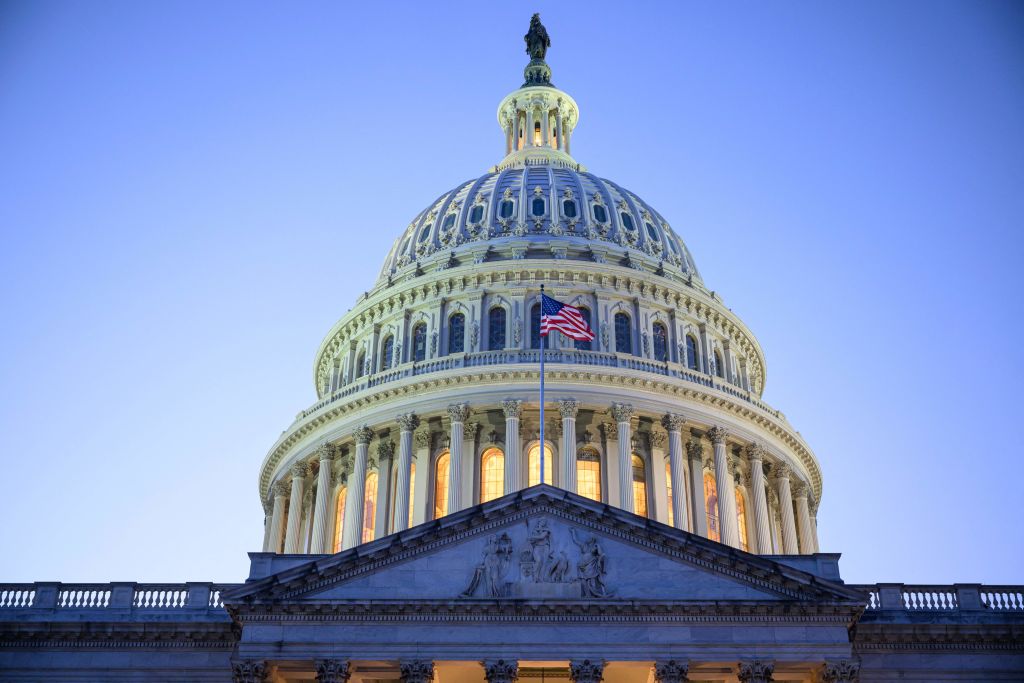Senate Republicans are heading into Election Day in a strong position to take the majority. With West Virginia all-but-guaranteed to flip to GOP control following the retirement of Sen. Joe Manchin (I-W.Va.), the partisan breakdown in the chamber will start off at 50-50 when the polls close tonight.
That means it only takes one more win for Republicans to secure an outright majority. Their best chances to do that are in Montana and Ohio, followed by the “Blue Wall” presidential battlegrounds and potentially an upset out West.
Let’s run through the various scenarios.
51-49 GOP majority
After West Virginia, the next-best pickup opportunity for Republicans is Montana, where Democratic Sen. Jon Tester has lagged behind his GOP opponent Tim Sheehy.
A win in Montana would immediately give Republicans an outright majority — assuming they don’t lose a seat elsewhere.
But if it’s a 51-49 Senate, that’s a massive disappointment for Senate Republicans given how favorable the 2024 map was for them heading into the cycle. That would mean Democrats held onto Ohio, Pennsylvania, Michigan, Wisconsin, Nevada and Arizona. If that’s the case, Democrats should pat themselves on the back.
A 51-49 GOP Senate wouldn’t be the worst result for Democrats. And it would greatly empower moderate Republican Sens. Susan Collins (Maine) and Lisa Murkowski (Alaska).
52-48 GOP majority — and above
If you add Ohio to Republicans’ list of pickups, that gives them a 52-48 majority. Ohio is a red state, though Democrats remain bullish about Sen. Sherrod Brown’s (D-Ohio) chances against Republican Bernie Moreno.
This is right around where Republicans believe they should end up. Anything more would just be gravy. Republicans believe the outcomes in the “Blue Wall” Senate races are tied directly to the presidential results in those states.
That’s why the GOP candidates in Pennsylvania, Michigan and Wisconsin — Dave McCormick, Mike Rogers and Eric Hovde, respectively — are hugging former President Donald Trump tightly.
Out west, keep your eyes on the Nevada Senate race. We were in the Silver State last week, as were Trump and Vice President Kamala Harris. Sen. Jacky Rosen (D-Nev.) has been polling consistently ahead of her GOP challenger Sam Brown, but the race is tightening amid strong early-voting numbers for Republicans. Jon Ralston, the Nevada journalist with an encyclopedic knowledge of the state, predicted that Rosen would top Brown by five points.
50-49-1 GOP majority
This is a wonky one but still possible. The Nebraska Senate race is much tighter than it should be. Independent candidate Dan Osborn has tapped into some unique messaging in his race against GOP Sen. Deb Fischer.
If Osborn were to somehow pull off a victory and keep his promise not to caucus with either party, we’d have a rare 50-49-1 GOP majority. (In this scenario, we’re putting Montana and West Virginia in the GOP column.)
But if Osborn could be persuaded to caucus with Democrats, that’d result in a 50-50 split under this scenario, in which case the Senate majority would be determined by the presidential race, since the vice president breaks the tie.
Osborn would join Murkowski and Collins as the most important swing votes in the Senate.
50-50 Democratic majority
It’s unlikely that Democrats will retain their majority. But any hope of doing so would require Harris to win, giving Tim Walz the tiebreaking vote as vice president.





